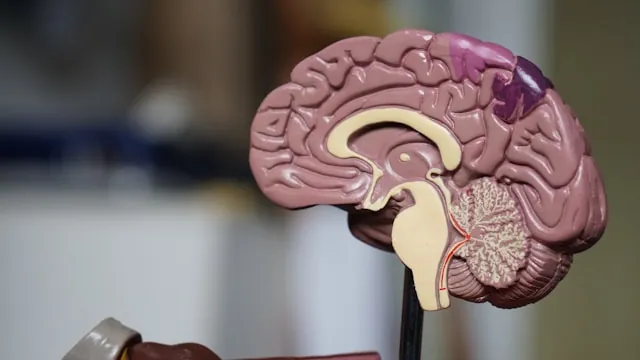
Breakthrough: Non-Invasive Technique Boosts Brain Waste Clearance
2025-06-04
Author: Daniel
Revolutionary Discovery in Brain Health
A groundbreaking study by scientists at the Institute for Basic Science reveals a non-invasive method that could revolutionize treatment for age-related neurological disorders. This innovative technique enhances the brain’s natural waste drainage system—essential for maintaining cognitive health as we age.
The Research Team and Their Findings
Led by Dr. Koh Gou Young and supported by a team of senior researchers, the study demonstrated that targeted stimulation of lymphatic vessels in the neck and face of mice significantly increased cerebrospinal fluid (CSF) flow. This fluid is crucial as it cushions the brain and eliminates toxic waste, including harmful proteins associated with Alzheimer's and other neurodegenerative diseases.
A New Approach to Brain Waste Clearance
The researchers propose this method as a safer alternative to traditional drug therapies and surgeries, illustrating that mechanical skin stimulation can effectively reinstate proper CSF drainage. Their findings, published in the journal *Nature*, indicate that age-related reductions in CSF clearance can be reversed through this innovative approach.
Understanding the Brain's Waste Removal System
As the human brain produces waste at an alarming rate, effective clearance is vital for healthy brain function. CSF plays a key role in this process, yet aging slows down its drainage. The study highlights how disrupted CSF clearance can be major contributors to cognitive decline in older adults.
Mapping New Pathways for CSF Drainage
Utilizing genetically modified mice and fluorescent tracers, the team discovered new routes for CSF drainage from the brain to superficial cervical lymph nodes, retaining functionality even in aging subjects. These breakthroughs demonstrate the potential to regulate impaired fluid drainage, opening new frontiers for neurological treatment.
A Game-Changer in Therapeutic Techniques
The researchers developed a handheld device designed to provide gentle mechanical stimulation to the skin. Tests on aged mice showed that this device could effectively double CSF drainage while not interfering with natural lymphatic functions. This could lead to the creation of wearable devices that augment waste clearance in older individuals.
Future Implications for Neurological Conditions
The findings underscore the potential of non-invasive mechanical stimulation to reverse CSF drainage impairments, paving the way for new therapies in managing Alzheimer’s and other neurodegenerative diseases. The team aims to explore how this drainage system is affected by various brain diseases and whether regular application of this technique can have lasting benefits.
Challenges Ahead for Clinical Application
While the research holds great promise, the team acknowledges that significant questions remain. Further investigation is crucial to understand the underlying causes of impaired CSF drainage in aging and neurological conditions, and to assess the long-term effectiveness of this innovative technique.

 Brasil (PT)
Brasil (PT)
 Canada (EN)
Canada (EN)
 Chile (ES)
Chile (ES)
 Česko (CS)
Česko (CS)
 대한민국 (KO)
대한민국 (KO)
 España (ES)
España (ES)
 France (FR)
France (FR)
 Hong Kong (EN)
Hong Kong (EN)
 Italia (IT)
Italia (IT)
 日本 (JA)
日本 (JA)
 Magyarország (HU)
Magyarország (HU)
 Norge (NO)
Norge (NO)
 Polska (PL)
Polska (PL)
 Schweiz (DE)
Schweiz (DE)
 Singapore (EN)
Singapore (EN)
 Sverige (SV)
Sverige (SV)
 Suomi (FI)
Suomi (FI)
 Türkiye (TR)
Türkiye (TR)
 الإمارات العربية المتحدة (AR)
الإمارات العربية المتحدة (AR)